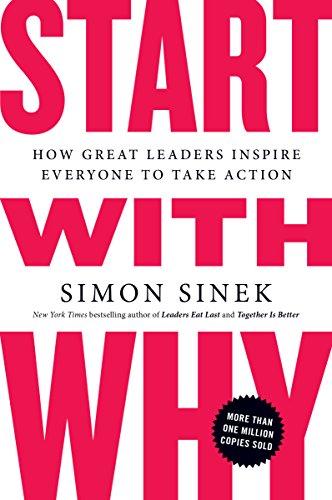

This article is an excerpt from the Shortform summary of "Start With Why" by Simon Sinek. Shortform has the world's best summaries of books you should be reading.
Like this article? Sign up for a free trial here .
How can you use The Law of Diffusion to create tipping points and mass market success? The key is making sure you’re marketing to the right population. This is diffusion marketing.
Diffusion marketing is the strategy of targeting innovators and early adopters, knowing that the rest of the population, the majority, will follow their lead. The approach is based on the Diffusion of Innovation model, which charts how new ideas spread through a population.
We’ll cover the Law of Diffusion and look at a diffusion marketing case study. Learn how diffusion marketing can transform your business and why you shouldn’t cater to the masses.
Diffusion Marketing Success
The Law of Diffusion of innovation in marketing explains how innovations–whether they are products, services, or ideas–spread through a population. There are five key populations of people who, over time, spread an innovation throughout a social system. They are: the innovators, the early adopters, the early majority, the late majority, and the laggards. For marketing purposes, you want to focus on the innovators and early adopters.
Making sure you get innovators and early adopters on your side first is the trick to diffusion marketing success. While these constitute just a small fraction of the overall population, they’re likely going to be your most loyal customers, and they’ll help your product spread to the masses.
How does the diffusion process in marketing work?
- The early adopters of your product or service will jump on board early because they align with your WHY. They join you well before you penetrate the general audience and before you have a broad reputation. They’re also willing to endure less-than-perfect products.
- If your product is good, your early adopters will become advocates for your company. They become fervent believers, spreading the message about your product to others..
- Early and late majority people won’t jump onboard by their own volition – they need social proof and need to be reassured before they buy. This is where your passionate early adopters will come in – they give trusted recommendations to the majority.
- Once you have enough early adopters and get to a tipping point, it’ll start a feedback loop that spreads to the majority.
Diffusion marketing raises the question – how do you attract the early adopters? By focusing on WHY. You win over people who align with your mission and are willing to tolerate significant cost or inconvenience to join your mission.
Diffusion Marketing: Don’t Start By Marketing to the Masses
In contrast with this logic, most companies focus on marketing new products to the middle of the bell (the Early and Late Majority). This seems intuitive – this is where the majority of the population falls, so it seems like the most successful place to start marketing.
But this tends not to work. The Majority rarely try a product unless someone else has tried it before them. Since they’re risk averse, they want a trusted recommendation before they jump in.
The further you move to the right of the bell curve–toward the late majority and the laggards–the more likely you are to find people who need what you’re offering but don’t share your WHY. As a result, they tend to be difficult to work with. This is not diffusion marketing.
You should avoid working with the late majority and laggards: not only will you struggle to get them to see your value, you’ll probably never win their loyalty. Instead, start by buliding a tipping point
Keep in mind that while most businesses want mass market success, only 2,000 businesses in the United States ever reach a billion dollars in annual revenue. 99.9% of all American businesses have fewer than 500 employees.
But if you want a shot at succeeding in the mass market, you have to use diffusion marketing correctly. You have to focus on reaching the innovators and early adopters if you want to penetrate the market .
Diffusion Marketing Case Study: TiVo
The term “TiVo” has come to mean the same thing as “recording on a DVR.” And yet, despite being well-funded with a great product, TiVo didn’t achieve mass market success because they didn’t start with WHY. As a result, they haven’t effectively used The Law of Diffusion of innovation in marketing.
Instead of telling people the WHY behind their company (which is to give people power over how they watch television), they spent all of their time talking about WHAT a DVR is and what it could do. Furthermore, they targeted the majority with their marketing, rather than the early adopters. This is an example of how NOT to employ diffusion marketing.
As such a new device, TiVO was difficult to understand the value of until you installed it in your house. But most people never got to that point.
Instead of focusing on WHAT, TiVO should have articulated its WHY – like “We want to empower people who like having control over every aspect of their lives, including when and how they watch TV.” This would have attracted the early adopters, who would align with the WHY, try out the device, and understand the value.
Then, the early adopters would have created a tipping point and spread the product to the masses. This would have been the way to take advantage of diffusion marketing.
———End of Preview———

Like what you just read? Read the rest of the world's best summary of "Start With Why" at Shortform . Learn the book's critical concepts in 20 minutes or less .
Here's what you'll find in our full Start With Why summary :
- What Steve Jobs did right compared to every other business leader
- How to define your organization's WHY
- How to help your organization avoid losing its edge as it succeeds






